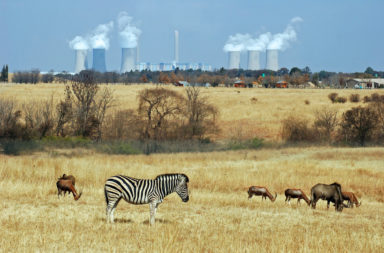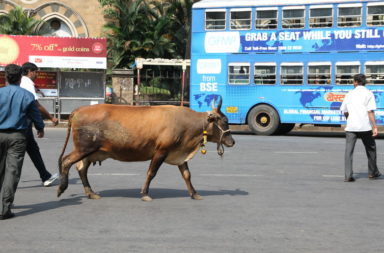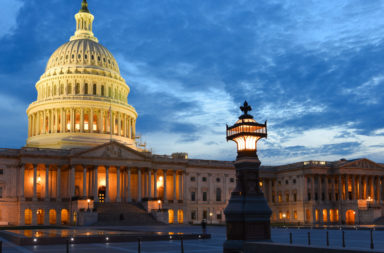The domestic record of Prime Minister Narendra Modi’s government is mixed. According to Pew, 87 percent of Indians have a favorable opinion of their prime minister, a level of support any elected leader would celebrate. After economic growth bottomed out at 4.5 percent under the previous government, India now boasts the world’s fastest-growing major economy, expanding at an annual rate of around 7.5 percent.
Yet Modi’s government has moved only slowly on the economic reforms urgently required to transform India’s development path. Communal tensions have grown as Hindu nationalists within the ruling Bharatiya Janata Party (BJP) have questioned the equal rights of India’s Muslims. Modi’s party was decisively defeated in recent elections in Bihar—a north Indian state with a population equal to that of the Philippines—, denying the BJP and its allies a majority in the upper house of parliament.
Despite this uneven record at home, Modi’s government has shone in foreign policy—including in East Asia, where India is determined to assert its expanding interests. As Modi declared at his first ASEAN-India summit in November 2014, “A new era of economic development, industrialization and trade has begun in India. Externally, India’s ‘Look East Policy’ has become ‘Act East Policy.’” He repeated this formulation at his first East Asia Summit the following week, updating the “Look East” formulation originally articulated by Prime Minister Narasimha Rao in 1991 by promising a new degree of Indian engagement to the east of the subcontinent.
Modi’s campaign to make India a first-tier Asian power not only involves deepening relations with East and Southeast Asia; it includes cementing closer ties with the United States. Although he was once subject to a US visa ban on account of communal violence that occurred on his watch as chief minister of Gujarat, Modi’s foreign policy has emphasized deepening India’s economic and military partnership with the United States, after a period of drift in bilateral ties under the previous, Congress-led administration. Modi and his close advisors understand that cooperation with the world’s sole superpower can catalyze India’s quest to modernize both its armed forces and its economy—and that no external power can do more to advance its internal transformation than the United States, given explicit (and bipartisan) US support for India’s rise.
Indians also identify a commonality of interests with the United States in East Asia. With the exception of Vietnam, India’s closest Pacific partners are US allies. At their New Delhi summit in January 2015, Modi and Obama issued a joint declaration on mutual goals in East Asia and the Indian Ocean region, which included an explicit statement of common concern to uphold freedom of navigation in the South China Sea—at a time when China was actively contesting that norm. Modi and Obama also had extensive and frank conversations about how India and America could cooperate to manage China’s challenge to Asia’s fragile balance of power. The policy deliverables from this meeting, and an earlier one in Washington, DC in September 2014, included American support in a range of fields to enhance India’s internal and external capacity to grow its economy and help uphold the peace of Asia.
India’s growing strategic focus on East Asia is also reflected in Modi’s foreign policy priority of improving ties with South Asian neighbors. These are not separate endeavors; Indian officials understand that their country cannot effectively balance China and pursue other broad interests if their near neighborhood is excessively penetrated by their great-power competitor. Part of the logic (though not all of it) of recent efforts to enhance relations with neighbors like Bangladesh, Sri Lanka, and Myanmar is to erode what had been alarmingly high levels of Chinese influence in these nations strategically situated on India’s borders. A historic border settlement between India and Bangladesh announced in June 2015 removed a strategic irritant in that relationship and has put ties on their best footing in years. Modi has benefited from political change in Sri Lanka, where domestic opposition to China’s deep influence in that island nation led to the electoral defeat of Prime Minister Mahinda Rajapaksa in January 2015 and the creation of a new government focused on strengthening ties with New Delhi. India has also accrued strategic gains from Myanmar’s process of domestic reform and opening after years in which a military junta exercised full control and enabled China to expand its economic and strategic footprint there; Beijing’s influence has receded as political liberalization has promoted leaders more amenable to Indian interests.
The link between India’s interests in East Asia and the affairs of the subcontinent is underscored by the two countries in which India’s interests have somewhat suffered under Modi. As prime minister, he visited Nepal twice and received a rapturous welcome; however, promulgation of a new Nepalese constitution that dilutes the political power of residents of the Terai—the populous lowlands bordering India where Madhesis and other social groups have traditionally enjoyed close ties to their southern neighbor—has produced a standoff with Kathmandu that has led its leaders to seek closer ties with Beijing. China has a strong interest in prying Nepal out of India’s sphere of influence, in part so as to complete a trans-Himalayan railway that would reinforce China’s control of Tibet. This new act in the competition for influence in Nepal, where New Delhi traditionally supported a royalist class that has lost influence to the Beijing-supported Maoists, who signed a peace deal with the government ending a long-running civil-war, puts at risk India’s strategy of containing Chinese influence on the southern slopes of the Himalayas by steering Nepal’s internal political development and remaining the country’s dominant economic partner.
The competition for influence in South Asia between China and India is also intensifying in Pakistan. Although Islamabad has historically enjoyed an intimate relationship with Beijing given their mutual interest in containing Indian power, the relationship was further enhanced in 2015 by President Xi Jinping’s commitment of USD 46 billion in assistance to construct a China-Pakistan Economic Corridor as a centerpiece of China’s “One Belt, One Road” strategy to enhance trade connectivity between western China, the Middle East, and Europe. Indians already resent China’s role in supporting Pakistan’s development of nuclear weapons and advanced ballistic missile technologies; they now add to their list of grievances a growing Chinese physical presence in India’s western neighbor, as crews of Chinese workers labor to construct road, rail, and pipeline corridors linking Xinjiang to Gwadar and Karachi via the Karakoram Highway. China’s upgraded economic investments in Pakistan will bring heightened Chinese interest in Pakistan’s security. This could lead to a more regular Chinese naval presence in Gwadar, additional deliveries of conventional weapons with which Pakistan’s powerful army can threaten India, and, potentially, the deployment of Chinese security forces to protect Chinese investments in Pakistan.
The Modi government is countering what Indians perceive as a Chinese strategy of encirclement in South Asia—as well as in the Indian Ocean and Arabian Sea through enhanced Chinese submarine and naval surface-vessel deployments—through a strategy of counter-encirclement focused on East Asia. This is not to argue that India’s more intimate relationships with Japan, Australia, and Southeast Asian states are simply a defensive measure vis-à-vis an expansionist Beijing. In fact, they are motivated by a range of compulsions, including India’s developmental imperatives and maritime security interests that extend beyond strategic considerations about China. There is even a values orientation to many of India’s relations in East Asia, since important regional powers like Japan, Australia, and Indonesia are fellow democracies with open societies, in juxtaposition to China’s authoritarian orientation.
Irrespective of the multifaceted rationale for the Modi government’s enhanced engagement with East Asia, the overall strategic effect of more developed Indian ties with important ASEAN members like Vietnam and Malaysia and US military allies like Japan and Australia is to counter China’s ability to dominate its region. Indeed, from the Indian perspective, the academic distinction between East and South Asia may be inconsequential in light of how China’s recent actions have helped fuse these theaters. Indian officials are queasy about China’s unilateral claims to control over the South China Sea not only because they threaten India’s access to East Asian partners and markets, but also because Chinese military facilities constructed on artificial islands in the Spratly and Paracel archipelagos position Chinese naval and air power at the mouth of the Indian Ocean. India has encouraged Japanese efforts to construct an east-west corridor of roads, railways, and pipelines across Indochina and Myanmar in order to develop deeper Indo-Japanese ties and prevent China from dominating the commerce of mainland Southeast Asia. India and the United States invited Japan and Singapore to join the 2015 Malabar naval exercises in the Indian Ocean, further blurring the old divisions between Asia’s subregions.
In short, just as China is acting to advance its interests in the Subcontinent, so is India acting to advance its interests in Southeast and East Asia, building a strategic arc of economic and military influence connecting India in the west to Japan in the north and Australia in the south via Southeast Asia. That the South China Sea sits at the center of this strategic triangle is not coincidental, and underlines New Delhi’s interest in freedom of navigation there in defiance of Chinese claims to sovereignty over those strategic waterways.
China is, thus, at the center of Modi’s approach to Asia writ large, but the strategy is not a purely defensive one. Modi seeks greater levels of Chinese trade and investment to support India’s development. While the summitry between Modi and Xi has been overshadowed by issues like their unresolved border dispute, both leaders have endeavored to find common ground to deepen economic ties. India has joined the Asian Infrastructure Investment Bank (AIIB), and the two countries collaborate in institutions like the New Development Bank (the “BRICS Bank”); but when pressed, security comes first in the official Indian thinking. Under Modi, India does not welcome China’s “New Silk Road” initiatives, which while appealing to many other countries eager for Chinese investment, looks from New Delhi like another way to encircle India and expand China’s influence in regions of strategic import to India, from Pakistan and Central Asia to Iran and the Persian Gulf.
More broadly, the Modi government’s response to China’s strategy of “Going West” has been for India to “Go East” by tightening relations with the other major Asia-Pacific powers. In doing so, Modi is continuing the work of Prime Minister Manmohan Singh, whose government did much to develop the strategic and economic relationship with Japan in particular. As India and China continue their great-power ascendancies, their external policies will increasingly bump up against each other in the wider region, and in their respective ties with the United States, which. will have to navigate between the Asian giants with tact and skill, always with the understanding that it is India that shares America’s core interests in a balance of power and values that tilts towards the democracies.




